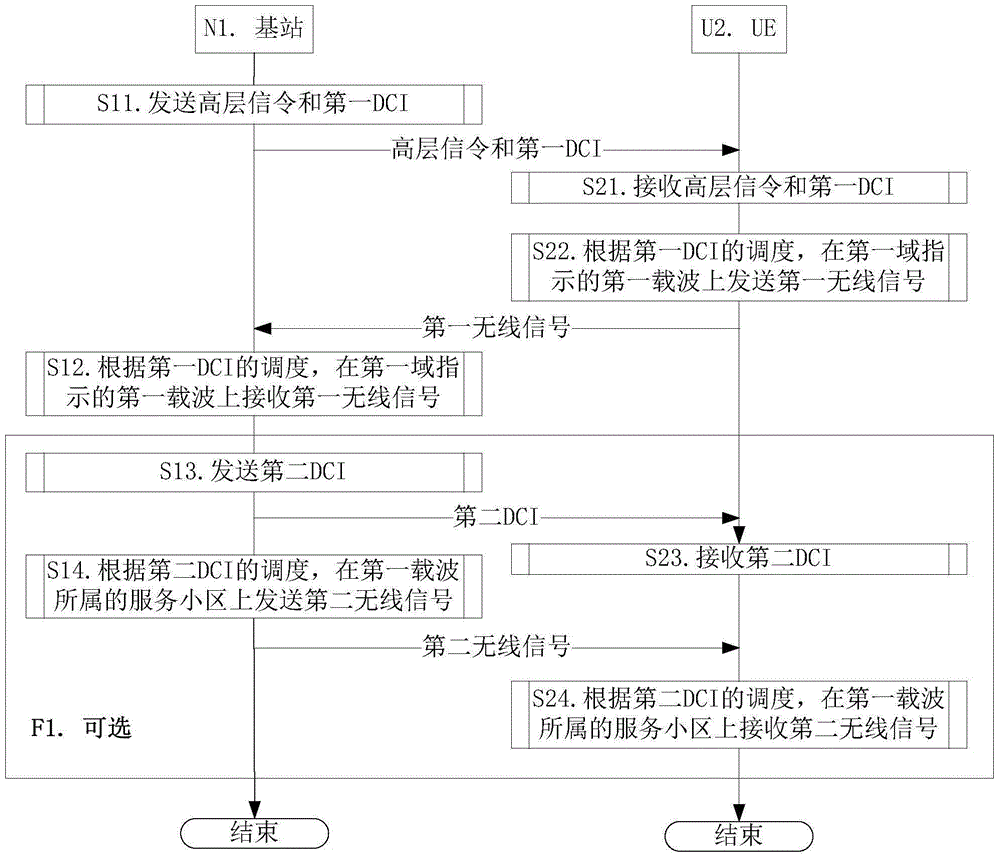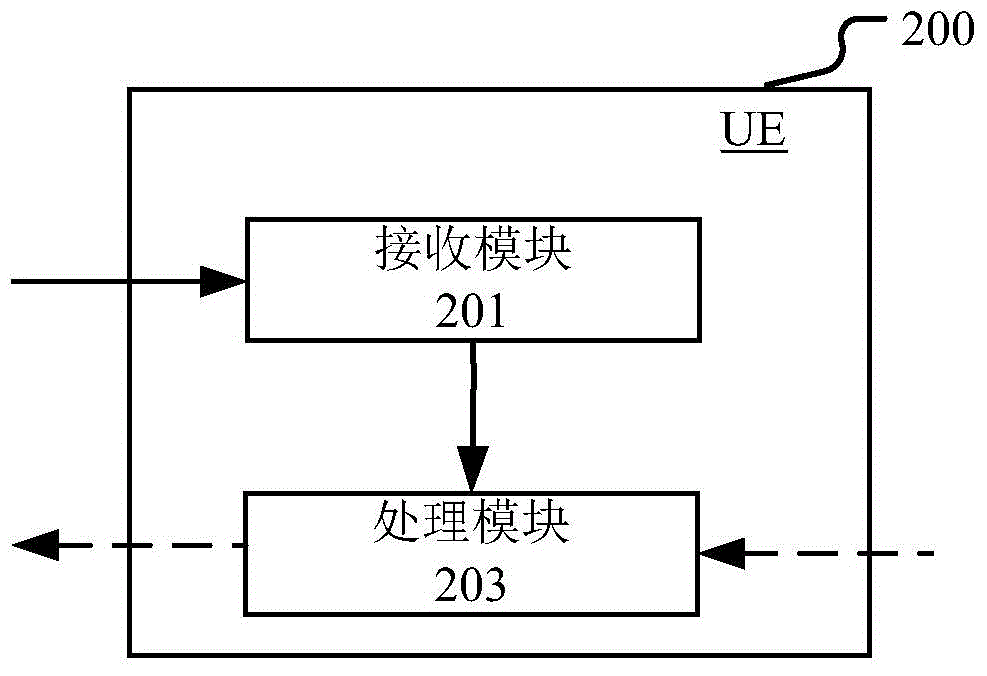PDCCH method in enhanced CA and apparatus thereof
A current configuration and service cell technology, applied in the field of CA scheduling, can solve problems such as the increase of the total number of DCI bits, multiple air interface resources, and the degradation of DCI reception performance, and achieve the effect of increasing degrees of freedom and decoupling
- Summary
- Abstract
- Description
- Claims
- Application Information
AI Technical Summary
Problems solved by technology
Method used
Image
Examples
Embodiment 1
[0085] Embodiment 1 illustrates the flow chart of wireless signal transmission, as attached figure 1 shown. attached figure 1 In , the base station N1 maintains the serving cell of the UE U2, the steps in block F1 are optional.
[0086] For the base station N1, in step S11, high-layer signaling and a first DCI are sent, the high-layer signaling indicates cell indexes of K serving cells, and the first DCI includes a first field. In step S12, according to the scheduling of the first DCI, the first wireless signal is received on the first carrier indicated by the first field. In step S13, the second DCI is sent. In step S14, according to the scheduling of the second DCI, the second radio signal is sent on the serving cell to which the first carrier belongs.
[0087] For UE U2, in step S21, high layer signaling and first DCI are received. In step S22, according to the scheduling of the first DCI, the first wireless signal is sent on the first carrier indicated by the first fiel...
Embodiment 2
[0096] Embodiment 2 illustrates a schematic diagram of a transmission carrier for scheduling signaling, as shown in the attached figure 2 shown.
[0097] The base station first sends high-level signaling and the first DCI to the target UE, the high-level signaling indicates cell indexes of (K1+K2) serving cells, and the first DCI includes the first field. The base station then receives the first radio signal sent by the target UE on the first carrier indicated by the first field according to the scheduling of the first DCI. The base station then sends the third DCI to the target UE. Finally, the base station receives the third radio signal sent by the target UE on the first carrier indicated by the first field according to the scheduling of the third DCI.
[0098] In Embodiment 2, the first carrier is jointly indicated by the first field and the scheduling direction (ie, uplink) of the first DCI. Said K is a positive integer. The target UE is currently configured with (K1...
Embodiment 3
[0102] Embodiment 3 illustrates a structural block diagram of a processing device used in a UE, as shown in the attached image 3 shown. attached image 3 Among them, the UE processing device 200 is composed of a receiving module 201 and a processing module 202.
[0103] The receiving module 201 is configured to receive high-level signaling and a first DCI, the high-level signaling indicates cell indexes of K serving cells, and the first DCI includes a first field. The processing module 202 is configured to process the first wireless signal on the first carrier indicated by the first field according to the scheduling of the first DCI.
[0104] In Embodiment 3, the first carrier is jointly indicated by the first field and the scheduling direction of the first DCI, the scheduling direction is uplink and the processing is sending, or the scheduling direction is downlink and the processing is receiving. The first carrier is a carrier of one of the K serving cells, where K is a ...
PUM
 Login to View More
Login to View More Abstract
Description
Claims
Application Information
 Login to View More
Login to View More - R&D
- Intellectual Property
- Life Sciences
- Materials
- Tech Scout
- Unparalleled Data Quality
- Higher Quality Content
- 60% Fewer Hallucinations
Browse by: Latest US Patents, China's latest patents, Technical Efficacy Thesaurus, Application Domain, Technology Topic, Popular Technical Reports.
© 2025 PatSnap. All rights reserved.Legal|Privacy policy|Modern Slavery Act Transparency Statement|Sitemap|About US| Contact US: help@patsnap.com



